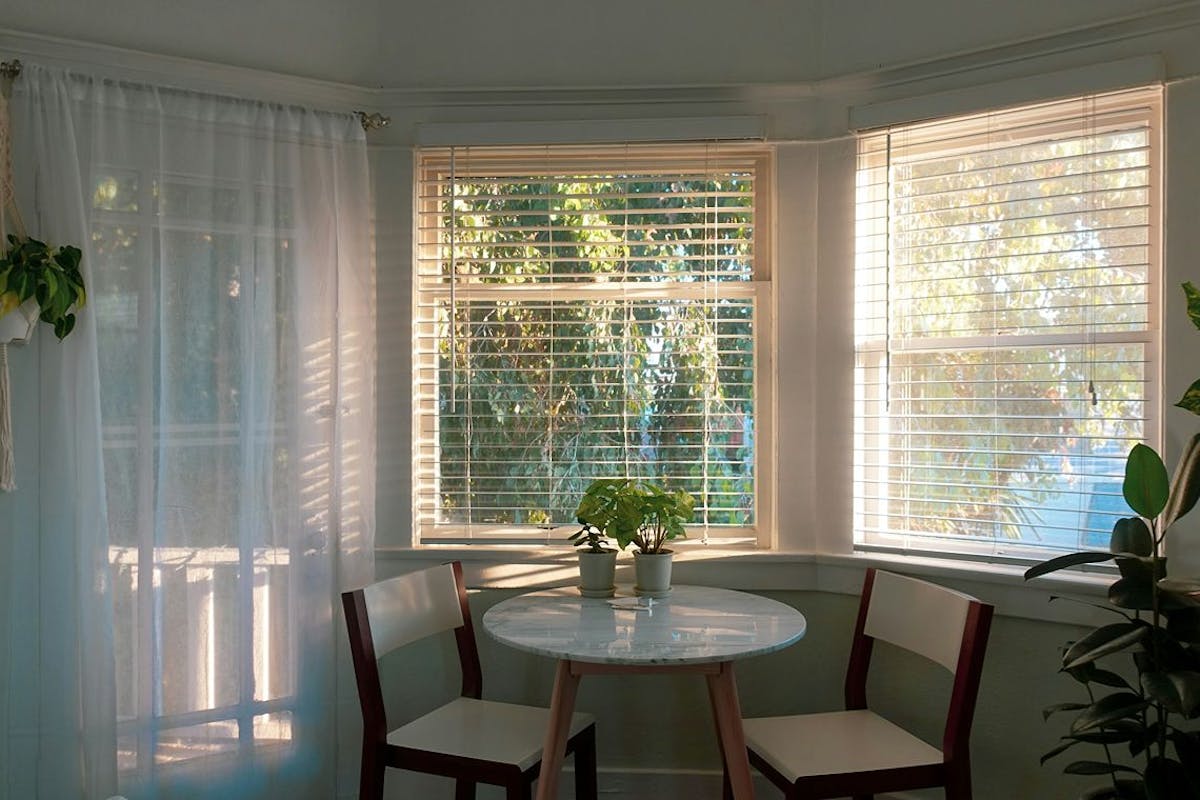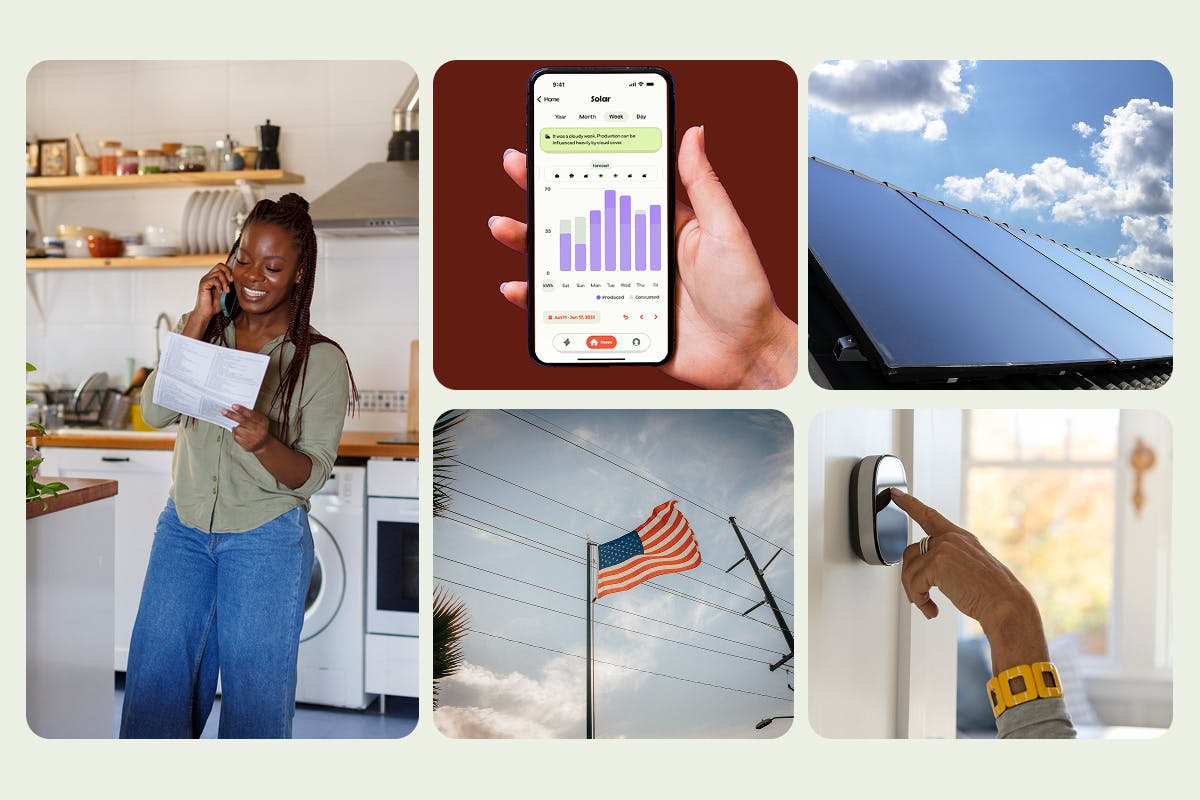Smart Blinds: Get Better Comfort, Savings, and Privacy
Last edited

Author
Andrew Blok
Electrification and Solar Writer and Editor

Editor
Andrew Giermak
Solar and Electrification Writer and Editor

Home energy efficiency can be improved in many ways, and most changes mad for energy efficiency have additional benefits. Smart plugs can help you cut down on vampire energy, and make your home more convenient in the process.
Smart blinds, which can open or close automatically, or at the touch of an in-app button, can improve a home's efficiency by blocking out or letting in sun when beneficial. They can also improve the privacy and look of your home, too. Here's what you need to know about stylish and energy-saving smart blinds.
See how much you can save with home energy changes
What Are Smart Blinds?
Smart blinds — like smart thermostats, smart plugs, and smart lights — do the same thing as their standard counterparts, but you can automate them or control them over the internet or through an app.
Smart blinds can open and close on a schedule. That makes it easy to adjust them when it’s advantageous: letting in or keeping out the sun’s heat during the day, or keeping your home cozy and private at night.
How Do Smart Blinds Work?
Smart blinds come with some level of automation. (While we’re saying smart blinds, you can also get smart shades and smart curtains with the same functionality.)
They could be as simple as app-controlled blinds that you connect to via Bluetooth and control from your phone. Or, they could connect to a smart speaker or smart home hub for automations, scheduling, or voice commands.
Smart blinds can wirelessly connect to your app, smart speaker, or smart home hub in a few different ways. While many smart window coverings operate on Wi-Fi, others may employ other wireless protocols like Thread, Zigbee, or Z-Wave. You’ll need to ensure your smart home hub is compatible with the devices you purchase if you want to use them in smart home automations.
What Are Smart Blinds Good For?
The uses for smart blinds, like many smart home devices, range from convenience to energy savings.
Energy efficiency
Smart blinds can be set to a schedule and improve your home’s comfort and efficiency. Set them to open to let in the sun’s warmth on a clear winter day and close at night to keep the heat in. Or set them to keep the sun out on a hot summer’s afternoon. Both solutions could keep your HVAC system from running harder than it needs to.
Hard to reach windows
Windows high above the floor often don’t have blinds because no one’s tall enough to adjust them, but they can still let in sunlight that heats your home and fades your furniture. Remote control smart blinds can solve that problem.
Privacy
Blinds scheduled to close when it gets dark can keep your home feeling safe and comfy.
See how much you can save with home energy changes
How Much Do Smart Blinds Cost?
The cost to install smart blinds depends on their size and how many you’re installing. Some blinds can be easily installed by the homeowner, while others require professional installation.
One thing is certain: They won’t be your cheapest option.
I set out to recreate the cheapest window shade from two smart blind companies and one standard online blind purveyor (24 inches wide and 36 inches tall). I could create dozens of standard, non-motorized blinds for less than $100. The cheapest smart blinds I could design from either manufacturer were around $255 and a whopping $659. Other online sources report prices lower than $200.
It’s hard to say how the quality of these blinds compares, but you’ll pay extra for the extra functionality. If you need remotes or smart hubs, those could add close to $100.
Are Smart Blinds Worth It?
Recouping the cost of your smart blinds through energy savings will be hard to pull off and even harder to measure.
The Department of Energy reports that about 30% of a home’s heating is lost through its windows and 76% of the sunlight that hits a double-paned window comes into the house as heat. Blinds, shades, and curtains can help by blocking sunlight and slowing heat loss. A home that heats up slower in the summer and cools down slower in the winter can give your HVAC system a break. (More than 50% of the average American household’s energy goes to space heating and cooling, according to the US Energy Information Administration.)
Installing blinds, curtains, or shades of any type can help you manage that part of your energy bill. The savings may not be enough to recoup the cost (especially of high-end smart blinds), but window coverings provide non-monetary benefits, too, like increased privacy and comfort.
If you’re interested in saving money with energy products for your home, see what you can save with Palmetto, from heat pumps to home solar panels and more.
See what home electrification can do for you:
Frequently Asked Questions
How much do smart blinds cost?
Smart blind costs vary by the number, size, makeup, and quality of the blinds you choose. Additional hardware, like remotes, smart home hubs, and range extenders, may be necessary and increase the cost. It’s typical to spend close to $200 per window covering for smart shades, though you can spend much more.
Who can benefit from smart blinds?
Smart blinds may be a good fit for people looking to automate their window coverings for convenience, privacy, or energy efficiency. Blinds with remote controls might be a good fit for windows that are difficult to reach.
How do blinds and curtains affect energy efficiency?
Even windows that don’t leak can reduce your home’s energy efficiency. Sunlight can heat your home in the summer and windows let heat escape in the winter. Blinds, curtains, and shades can slow heat exchange during the heating and cooling seasons.



